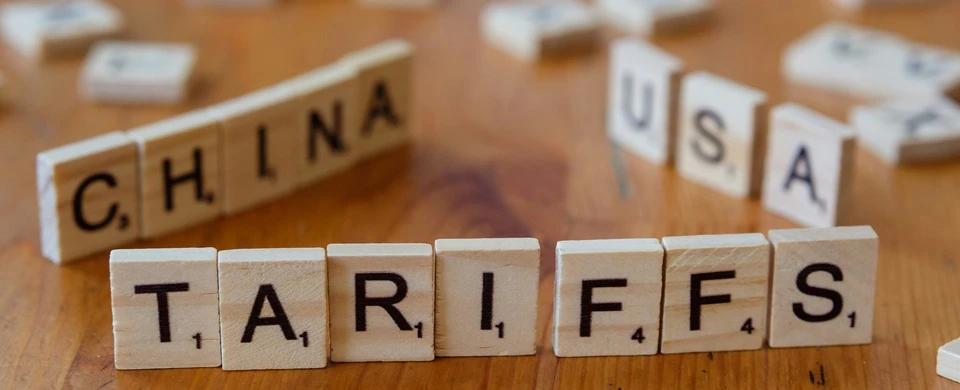

Tariffs and Inflation: Bitcoin as a Safe Haven
The trade war, reignited under President Donald Trump’s second term, has driven significant market volatility. U.S. tariffs, initially set at 54% in early April 2025, surged to 145% within a week, prompting China to counter with 125% duties on American goods. These levies, aimed at addressing trade imbalances and issues like fentanyl trafficking, have fueled inflation fears.

The U.S. Consumer Price Index (CPI) rose 3.8% year-over-year in April 2025, per the Bureau of Labor Statistics, partly due to higher import costs. Bitcoin, often called “digital gold,” has seen increased demand as a hedge against inflation. In April 2025, Bitcoin’s price hovered around $95,000, a 20% jump from January.
“Bitcoin’s resilience amid tariff-driven volatility underscores its appeal as a store of value,” says Sarah Tran, a cryptocurrency analyst at Wolfe Research.
Unlike traditional assets, Bitcoin’s decentralized nature shields it from direct tariff impacts, making it attractive to investors in both nations.
Bitcoin Reserves: A New Economic Arms Race
The trade war has sparked discussions about Bitcoin as a national reserve asset. The U.S., holding approximately 1% of the global Bitcoin supply (about 210,000 BTC as of May 2025, per Glassnode data), has taken steps to formalize its reserves. In March 2025, the Treasury Department proposed a Strategic Bitcoin Reserve, a move Pantera Capital’s Dan Morehead calls “a hedge against dollar dominance risks.”
This follows China and Russia’s reported use of Bitcoin for energy trade settlements, bypassing U.S. dollar-based systems. China, while historically restrictive on crypto, has softened its stance. The People’s Bank of China (PBoC) is exploring a digital yuan, but Bitcoin’s global liquidity makes it a viable alternative for international trade.
“China’s export controls on rare earths, critical for tech and crypto mining, signal a strategic pivot,” said economist Zoltan Pozsar at Token2049. These controls, announced in April 2025, have raised mining hardware costs by 15%, potentially shifting global hash rates and strengthening China’s influence over Bitcoin’s infrastructure.
Market Impacts: Volatility and Opportunity
The trade war’s ripple effects on crypto markets are undeniable. Bitcoin’s price dropped 4% to $79,158 on April 10, 2025, after China’s retaliatory tariffs. Yet, it rebounded to $94,000 by month’s end, driven by institutional buying. The global crypto market cap fell $250 billion to $2.44 trillion in early April but recovered to $2.6 trillion by May. For everyday consumers, the trade war’s inflationary pressure, projected to raise U.S. retail prices by 5-7% in 2025, makes Bitcoin an appealing alternative to cash savings.
In China, where the yuan faces depreciation risks, citizens are reportedly using offshore exchanges to buy Bitcoin, echoing trends from 2019 when the yuan’s 7% drop boosted Bitcoin’s price by 26.5%, according to the South China Morning Post.
Geopolitical Strategy: Bitcoin as a Trade War Weapon
Beyond markets, Bitcoin is becoming a geopolitical tool. China’s export controls and the U.S.’s Bitcoin reserve push suggest both nations see crypto as a way to counter economic sanctions. “Bitcoin could be the next arms race,” Pozsar warned at Token2049, predicting a “strategic Bitcoin gap” where nations stockpile BTC to hedge against dollar or yuan volatility.
For U.S. businesses, tariffs mean higher costs for Chinese imports like electronics, which account for 30% of U.S. consumer goods. Bitcoin’s role in cross-border payments could mitigate some losses by reducing reliance on SWIFT, which is vulnerable to sanctions. In China, firms like Huawei are exploring blockchain to bypass U.S. restrictions, a trend that could integrate Bitcoin into trade finance.
Parting Shot: Risks and Resilience
Despite its promise, Bitcoin faces risks in the trade war. Regulatory crackdowns, particularly in China, could limit retail access, while U.S. policies might tighten if Bitcoin undermines dollar hegemony. A potential recession, flagged by JPMorgan as 40% likely in 2025, could dampen crypto demand. Yet, Bitcoin’s fixed supply and global adoption, with over 600 million users worldwide, suggest resilience.
Here at BitEdge, we believe Bitcoin’s role in the U.S.-China trade war is a story of adaptation.
It’s a hedge for some, a reserve for others, and a wildcard in global finance.
He has worked with several companies in the past including Economy Watch, and Milkroad. Finds writing for BitEdge highly satisfying as he gets an opportunity to share his knowledge with a broad community of gamblers.
Nationality
Kenyan
Lives In
Cape Town
University
Kenyatta University and USIU
Degree
Economics, Finance and Journalism


Facts Checked by Maryam Jinadu

 Fact checked by
Fact checked by 
 eabungana@gmail.com
eabungana@gmail.com 